In this blog, curators Thomas Lean and Sarah Baines highlight some of the extreme stories you can experience in our galleries in the lead up to Manchester Science Festival.
Faster… than a horse: Model of Rocket locomotive
This little model of the 1829 Rocket locomotive represents a world-changing moment in transport history. When Rocket, a prototype steam locomotive, first did the 31-mile run between Liverpool and Manchester from this very site, it travelled at an astounding 35 miles per hour. Ok, so that doesn’t seem very fast to us now (or maybe it still does if you travel by train very often today), but in 1830 it was the first time any vehicle had moved faster than a horse.
To the first passengers on the Liverpool and Manchester Railway, it must have felt like flying. Before the railway, twisty, crowded road and water routes meant the journey between Manchester and Liverpool was unreliable and could take all day. The new steam-powered railway reduced the journey to a speedy 2 hours.
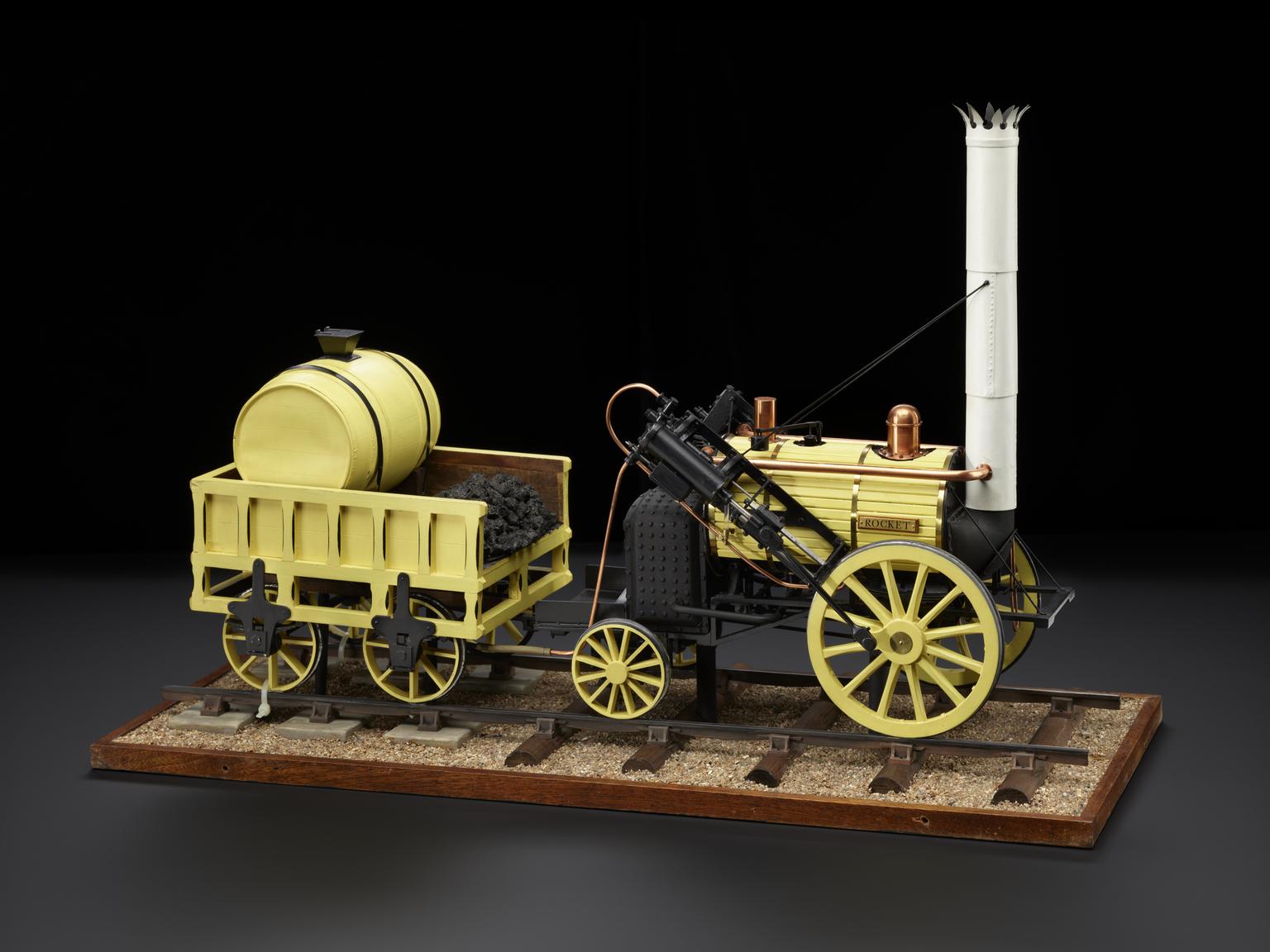
Science Museum Group Collection © The Board of Trustees of the Science Museum
More information
Extremely loud: Our textile machinery
In the 19th century, Manchester was at the centre of the world’s cotton industry. In hundreds of mills across Lancashire, thousands of machines turned raw cotton into thread and fabric. The cotton business was booming, literally.
Cotton mills were extremely loud places to work. The whirr of thousands of spindles, the clatter of flying shuttles, the clank of spinning mules and the throb of steam engines created a cacophony of noise. Mills were so noisy that workers communicated using mix of sign language and lipreading called ‘meemaw’. Today you can experience the sounds of the cotton mills at the machinery demonstrations in our Textiles Gallery.
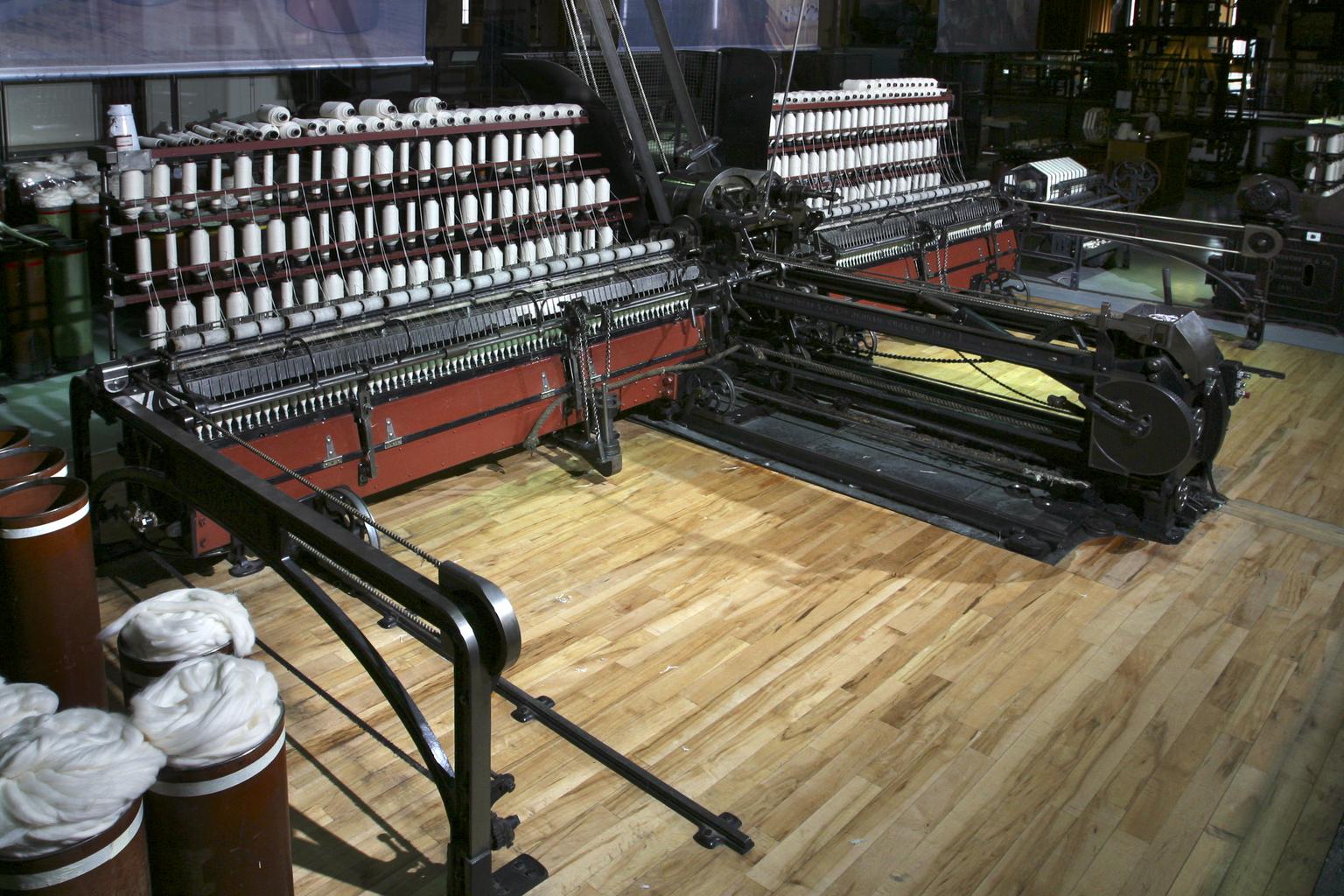
Science Museum Group Collection © The Board of Trustees of the Science Museum
More information
Super strong: Graphene concrete and a graphene jacket
Wonder material graphene is extreme in so many ways. It’s the strongest, thinnest, lightest and most conductive material discovered. First isolated in Manchester in 2004, it has revolutionised materials science.
Production of cement for concrete in the building industry is one of the leading causes of global carbon dioxide emissions. This graphene-enhanced concrete sample was used to test the idea that the addition of only up to 1% of graphene strengthens concrete by around 30% compared to standard concrete, meaning considerably less is needed to build the same structure, reducing carbon footprint. Graphene has huge potential for reducing our carbon footprint. It can also be used to create high performance threads, as in this graphene-enhanced lightweight jacket.
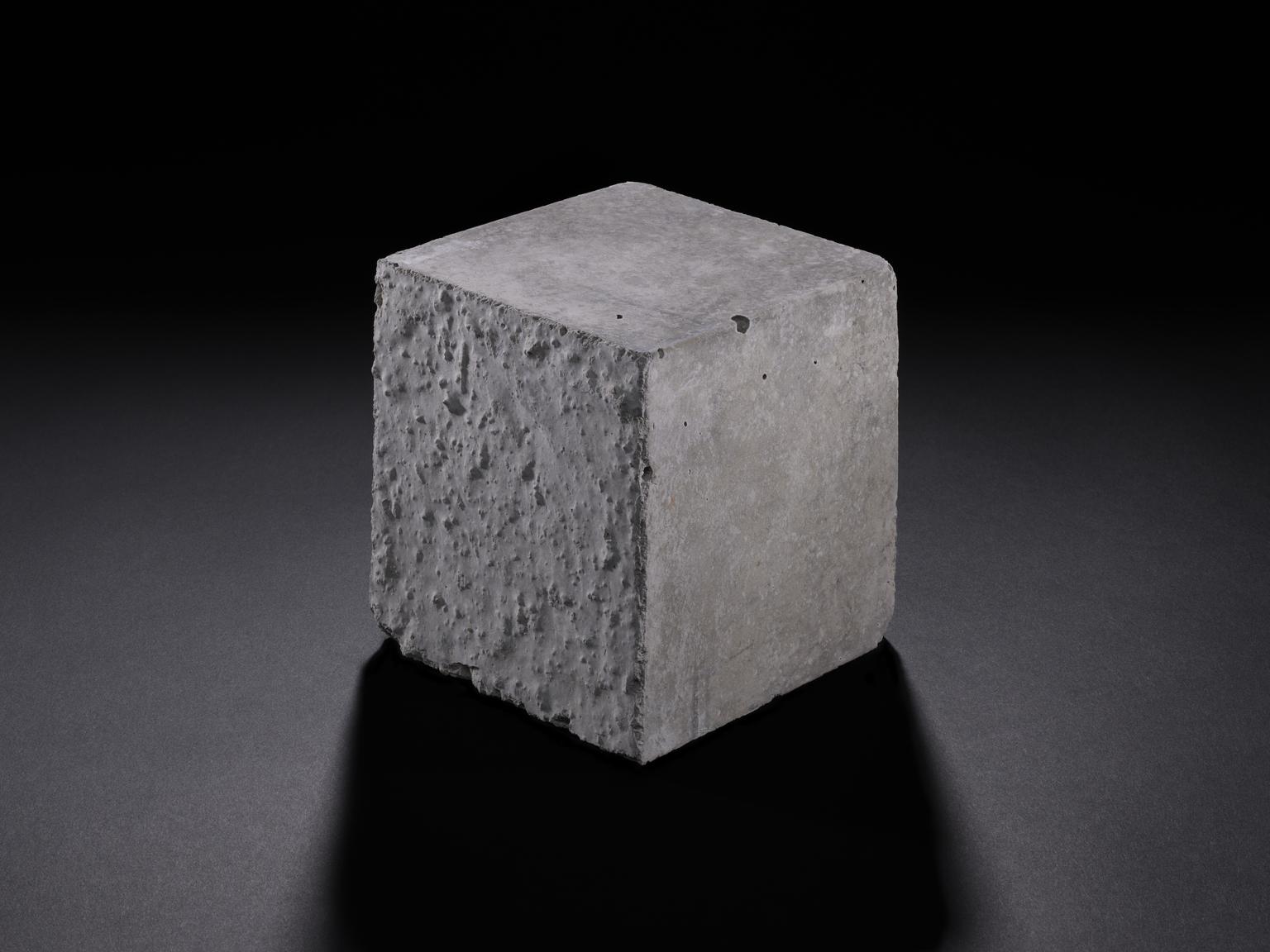
Science Museum Group Collection © The Board of Trustees of the Science Museum
More information

Image: Vollebak
More information
Very, very smooth: Whitworth planing machine
Before machine tools were invented in the early 19th century, everything had to be made by hand. This planing machine, built in 1842, represents a world-changing moment in engineering. It was designed by Joseph Whitworth, a Manchester mechanical engineer. He was a perfectionist with a vision for a very precise and standardised future. His measuring machines and machine tools raised the bar for precision engineering.
Perhaps his greatest impact on the world, though, was the fact that his standardisation of measurements enabled mass production to go global. Parts became interchangeable, and they could be knocked up in any machine shop. From weapons to flat pack furniture, the idea of standardised measurements has transformed global trade networks and economies.
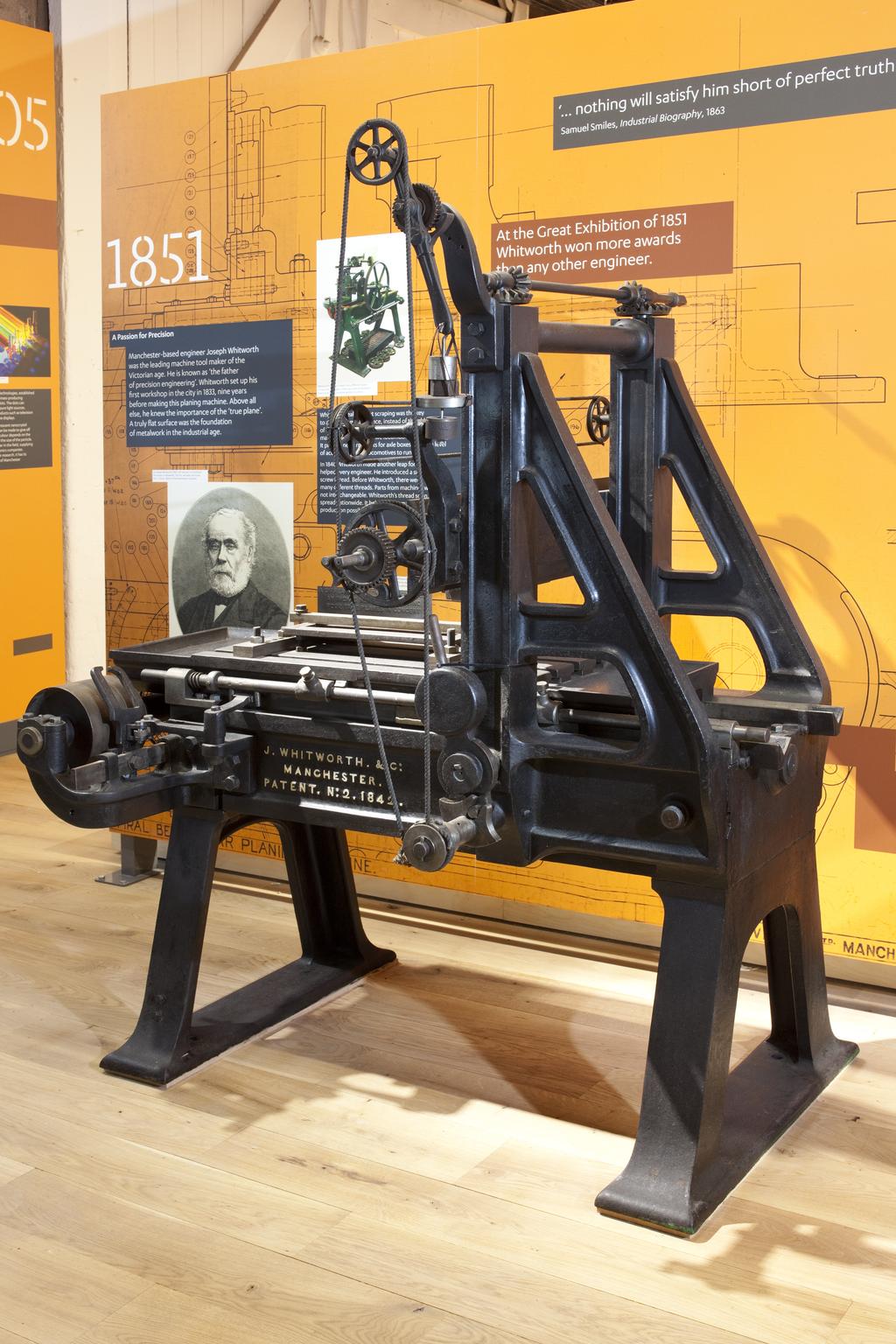
Science Museum Group Collection © The Board of Trustees of the Science Museum
More information
Brighter than the sun: Synchrotron radiation source beamline
Built in Daresbury, Cheshire, in 1980, the Synchrotron Radiation Source (SRS) was a cutting-edge particle accelerator, built around a storage ring 96 metres in circumference. Inside the SRS, electromagnets accelerated electrons to incredible speeds, creating a beam of synchrotron light which was millions of times brighter than the sun.
Beamlines like this one were stationed around the SRS so scientists could connect their instruments to perform experiments. By shining the intense beam of synchrotron light from the SRS at samples of different substances, scientists could look inside them to investigate their underlying atomic structure and composition.
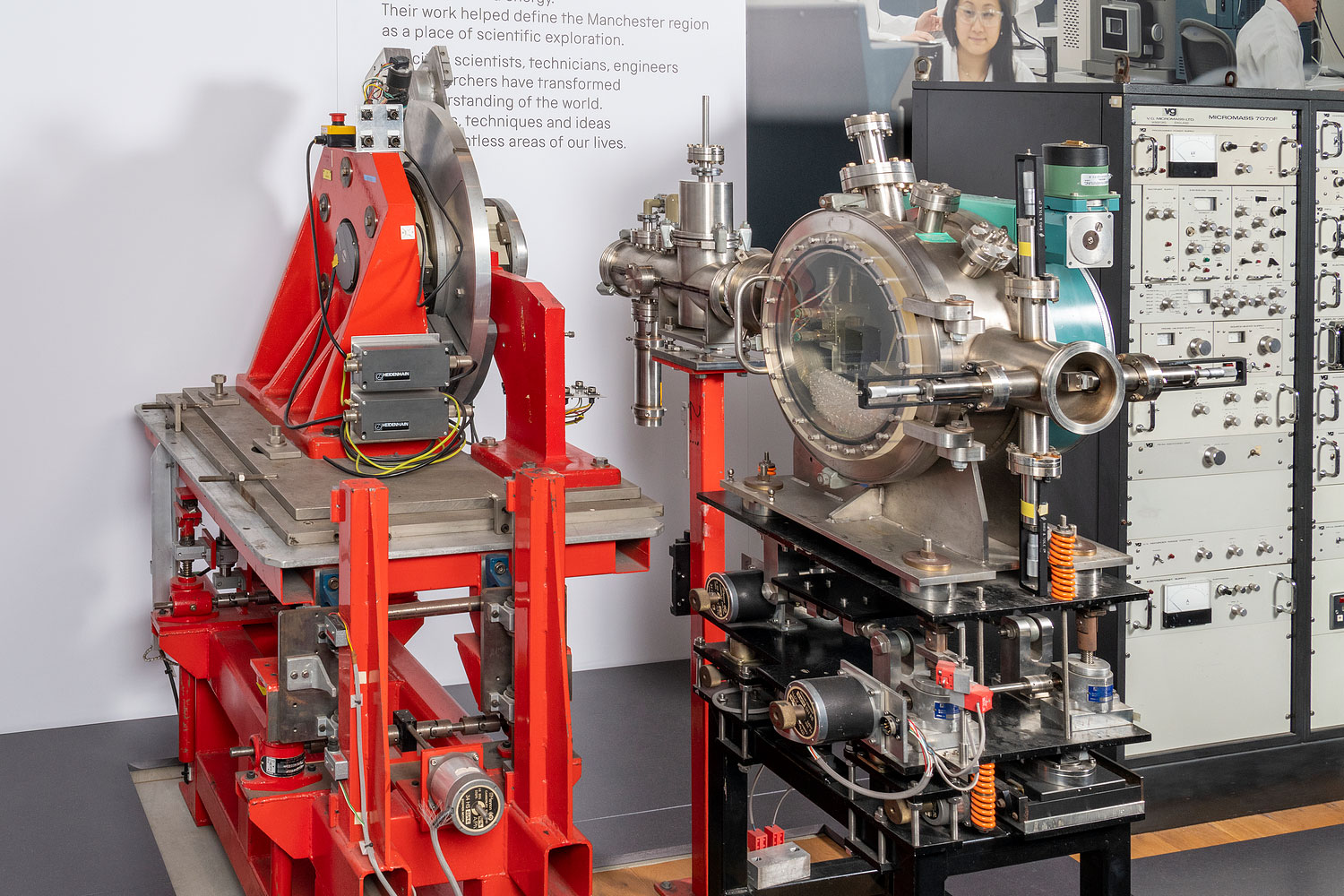
Science Museum Group Collection © The Board of Trustees of the Science Museum
More information
Absolutely tiny: John Dalton’s atomic models
Meticulous Manchester scientist John Dalton (1766–1844) revolutionised the understanding of an extremely tiny scale of matter. He was one of the earliest scientists to develop an atomic theory explaining how chemical elements were made of extremely small particles (atoms) of that substance. According to Dalton, all the atoms of an element were identical to each other but were different from atoms of other elements. Dalton’s concepts were revolutionary and, although new discoveries have amended his atomic theory, it helped form the basis for modern chemistry.
Atoms are far too small to see, so these ball-and-stick models were used by Dalton as a way of demonstrating his atomic theory and were made in Manchester by his friend Peter Ewart around 1810.
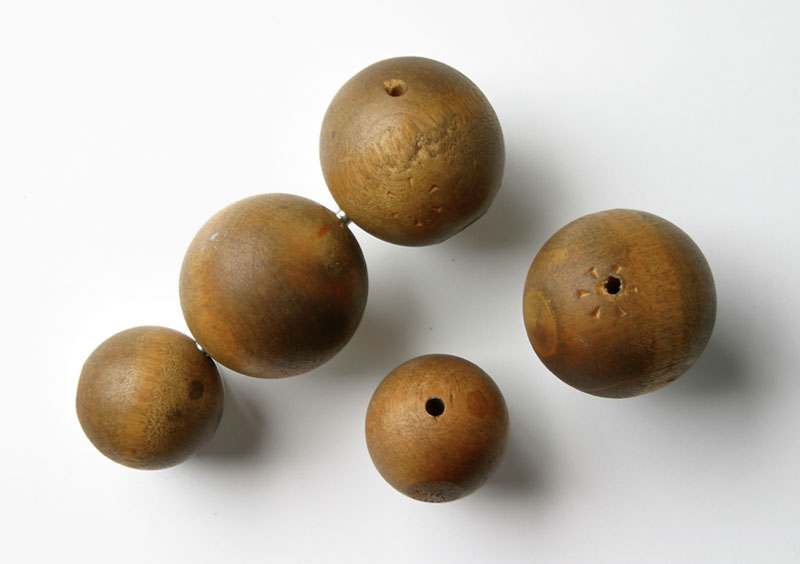
Science Museum Group Collection © The Board of Trustees of the Science Museum
More information